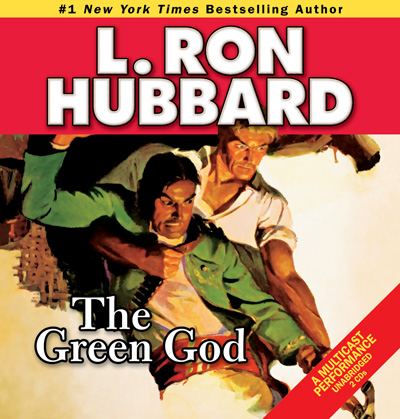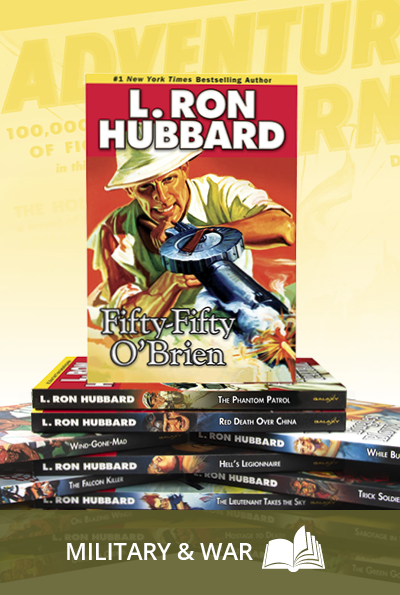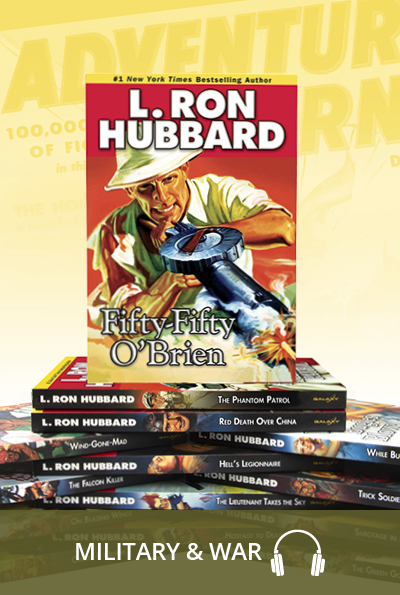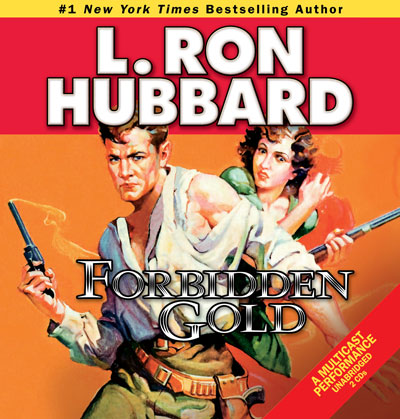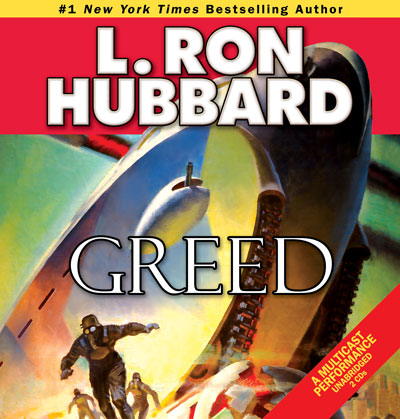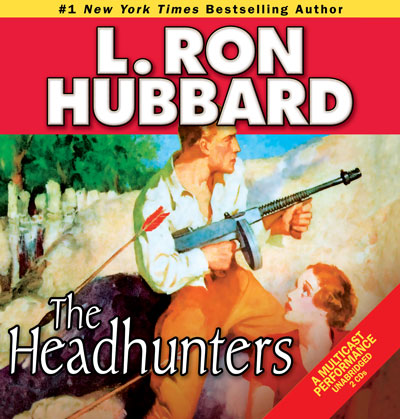Lieutenant Bill Mahone of Naval Intelligence is on a mission to find The Green God … and it’s life or death.
Along the way, he’s tortured with knives, threatened with a slow, painful death, and buried alive. And then things get really nasty. The entire Chinese city of Tientsin is under siege from within—the streets filled with rioting, arson, mass looting, and murder. And all because the city’s sacred idol, the Green God, has gone missing.
Mahone’s convinced he knows who stole the deity of jade, diamonds, and pearls. To retrieve it, though, he’ll have to go undercover and underground. But he’s walking a razor’s edge—between worship and warfare, between a touch of heaven and a taste of bloody hell.
Also includes the adventure “Five Mex for a Million,” in which an American Army captain, falsely accused of murder, finds himself taking on the Chinese government, a powerful Russian general, and a mysterious, unexpected passenger.
Performers: R.F. Daley (narrator), Jim Meskimen, Christina Huntington, Michael Yurchak, and James King.
SAMPLE
ABOUT THE AUTHOR
As a young man, L. Ron Hubbard visited Manchuria, where his closest friend headed up British intelligence in northern China. Mr. Hubbard gained a unique insight into the intelligence operations and spy-craft in the region as well as the criminal trade in sacred objects. It was on this experience that he based The Green God, which was his first professional sale, published in February 1934—the beginning of a very remarkable and prolific writing career.
The Green God Glossary
Stories from the Golden Age reflect the words and expressions used in the 1930s and 1940s, adding unique flavor and authenticity to the tales. While a character’s speech may often reflect regional origins, it also can convey attitudes common in the day. So that readers can better grasp such cultural and historical terms, uncommon words or expressions of the era, the following glossary has been provided.
ballyhoo artist: someone who uses exaggerated or lurid material in order to gain public attention.
Bund: the word bund means an embankment and “the Bund” refers to a particular stretch of embanked riverfront along the Huangpu River in Shanghai that is lined with dozens of historical buildings. The Bund lies north of the old walled city of Shanghai. This was initially a British settlement; later the British and American settlements were combined into the International Settlement. A building boom at the end of the nineteenth century and beginning of the twentieth century led to the Bund becoming a major financial hub of East Asia.
Forbidden City: a walled enclosure of central Peking, China, containing the palaces of twenty-four emperors in the Ming (1364–1644) and Qing (1644–1911) dynasties. It was formerly closed to the public, hence its name.
forty-five or .45 automatic: a handgun chambered to fire a .45-caliber cartridge and that utilizes the recoil or part of the force of the explosive to eject the spent cartridge shell, introduce a new cartridge, cock the arm and fire it repeatedly.
G-men: government men; agents of the Federal Bureau of Investigation.
Gobi: Asia’s largest desert, located in China and southern Mongolia.
gunwale: the upper edge of the side of a boat. Originally a gunwale was a platform where guns were mounted, and was designed to accommodate the additional stresses imposed by the artillery being used.
Horatius: legendary Roman hero. He held an opposing army at bay while the Romans cut down a bridge connecting Rome with the road westward, thus preventing the enemy from crossing.
Huangpu: long river in China flowing through Shanghai. It divides the city into two regions.
hutung: (Chinese) a lane or alley.
ideographs: written symbols that represent an idea or object directly, rather than by particular words or speech sounds, as Chinese or Japanese characters.
Inner Mongolia: an autonomous region of northeast China. Originally the southern section of Mongolia, it was annexed by China in 1635, later becoming an integral part of China in 1911.
International Settlement: a reserved area in China set aside by the government where foreigners were permitted to reside and trade. These areas, called settlements or concessions, were leased from the Chinese government and were administered by the foreign residents and their consuls and not under the jurisdiction of Chinese laws or taxes. All such foreign settlements on mainland China were eventually dismantled when the Communist Party of China took control of the government in 1949.
Kalgan: a city in northeast China near the Great Wall that served as both a commercial and a military center. Kalgan means “gate in a barrier” or “frontier” in Mongolian. It is the eastern entry into China from Inner Mongolia.
legation: the official headquarters of a diplomatic minister.
light out: to leave quickly; depart hurriedly.
Manchuria: a region of northeast China comprising the modern-day provinces of Heilongjiang, Jilin and Liaoning. It was the homeland of the Manchu people, who conquered China in the seventeenth century, and was hotly contested by the Russians and the Japanese in the late nineteenth and early twentieth centuries. Chinese Communists gained control of the area in 1948.
Mex: Mexican peso; in 1732 it was introduced as a trade coin with China and was so popular that China became one of its principal consumers. Mexico minted and exported pesos to China until 1949. It was issued as both coins and paper money.
Morrison Street: street in Peking named after Australian George Morrison (1862–1920), a journalist and political advisor to the Chinese government. The street was the center for commercial activities.
Native Quarter: Native City; walled portion of the city where the native Chinese resided, also referred to as the Walled City. Foreigners in Tientsin lived in the International Settlement, located outside the Native City.
Outer Mongolia: originally the northern section of Mongolia, it was a political division of the Beiyang (warlord) Government, a series of military regimes that ruled from Peking from 1912 to 1928. Today the name is sometimes still informally used referring to Mongolia, a sovereign state, which controls roughly the same territory.
Peking: now Beijing, China.
phaeton: a vintage car body style, similar to a sedan or convertible sedan, where the rear-seat area is extended for added leg room, giving the vehicle the appearance that it is meant to be chauffeur-operated. This body type was popular up to the early years of World War II.
pink tea: formal tea, reception or other social gathering usually attended by politicians, military officials and the like.
pitch torch: a torch that was made by pounding a stick to loosen the fibers and then covering it with melted pitch until it was thoroughly soaked. When the pitch was hardened, another layer was spread thickly over it. This made a torch that burned brightly for many hours.
present arms: a position in which a long gun, such as a rifle, is held perpendicularly in front of the center of the body.
rapier: a small sword, especially of the eighteenth century, having a narrow blade and used for thrusting.
Route Army: a type of military organization exercising command over a large number of divisions. It was a common formation in China but was discarded after 1938.
sampan: any of various small boats of the Far East, as one propelled by a single oar over the stern and provided with a roofing of mats.
Scheherazade: the female narrator of The Arabian Nights, who during one thousand and one adventurous nights saved her life by entertaining her husband, the king, with stories.
shut of: free of; rid of.
slew: to turn about an axis; pivot.
Taku: site of forts built in the 1500s to defend Tientsin against foreign invasion. The forts are located by the Hai River, 37 miles (60 km) southeast of Tientsin.
thirty-eight or .38: a .38-caliber pistol.
Tientsin: seaport located southeast of Peking; China’s third largest city and major transportation and trading center. Tientsin was a “Treaty Port,” a generic term used to denote Chinese cities open to foreign residence and trade, usually the result of a treaty.
tiger whiskers: whiskers from a tiger used in traditional remedies believed to cure ailments ranging from toothache to epilepsy; sold in markets in China.
Tom and Jerry glass: a thick glass for a hot drink called “Tom and Jerry,” containing rum, brandy, nutmeg and egg, to which milk is sometimes added.
Uliassutai: at the time of the story, Outer Mongolia was divided into two administrative divisions: Uliassutai, which housed a military governor controlling the western division, and Urga, which housed the Chinese imperial agent who ruled the eastern division. Today, Urga (now known as Ulan Bator) is the capital of Mongolia.
Valkyrie: (Norse mythology) one of the twelve handmaids of Odin (god of war, poetry, knowledge and wisdom) who ride their horses over the field of battle and escort the souls of slain heroes to Valhalla.
whistling post: whistle stop; a small town or community.
White Russian: a Russian who fought against the Bolsheviks (Russian Communist Party) in the Russian Revolution, and fought against the Red Army during the Russian Civil War from 1918 to 1921.

